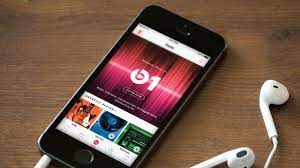Are you not satisfied with the sound of music, video, and podcasts emanating from your handset’s speakers? Here are several ways to improve what you hear.
I’m always searching for ways to improve the sounds I hear. Whether it’s my record player, a streaming service on my desktop, or my phone, no device is exempt from my never-ending quest.
If your primary source of music, podcasts, videos, etc. is your Android phone, and you’ve yet to feel satisfied, there are several ways to improve what you hear. Although you’ll never reach a state of audiophile nirvana on a mobile device, you can improve the results dramatically without too much work.
Let me show you how.
5 tips for getting the best sound from your Android phone
1. Use wired headphones
Bluetooth is convenient, but noisy. When it sends a signal from your phone to your headphones, two things happen. First, the sound is compressed, thereby losing a considerable degree of fidelity. Second, there’s always the chance of interference, which can introduce noise into the signal.
Because of these two factors, you should opt for wired headphones when you want higher-quality sound. Of course, with most modern phones, that means purchasing a USB-C to 3.5mm adapter, so you can plug those headphones in. If you’re looking for a budget-friendly pair of headphones that can handle Bluetooth and wired connections, I highly recommend the Marshall Major IVs.
2. Disable Absolute Volume for Bluetooth
Here’s an issue I often encounter while running outside: Sound coming through a Bluetooth connection isn’t loud enough to be heard clearly. This can be especially true when using bone-conducting headphones, which let in a lot of ambient sound. This tip comes with a warning, however: Use this option with caution, as you could wind up with sound that’s too loud or distorted. Also, sending too many decibels into your ears could damage them.
To disable Absolute Volume for Bluetooth in Android, you must first enable Developer Options. Open Settings and go to About Phone. Locate the Build Number listing and tap it seven times. Once you’ve enabled Developer Options, locate the option in Settings and find Disable Absolute Volume. Tap the On/Off slider until it’s in the On position. You should now be able to get more volume from your Bluetooth speakers.

3. Listen to music from a better source
If your primary source of music is a streaming service, you’ll want to make sure the service you’ve chosen offers a high-quality option. Although Spotify has yet to release its long-rumored HiFi option, you can at least change the Audio Quality settings (for both Wi-Fi and cellular) to High or Very High.
I would recommend using Automatic for cellular and Very High for Wi-Fi. If you use Very High for cellular, Spotify will consume considerably more data, which could lead to overages. Some music streaming services — Tidal is one — already offer high-resolution audio options.
Not every phone/headphone combination can produce high-resolution audio, so your mileage may vary. Also, be sure to download your music in high-quality formats, such as FLAC (Free Lossless Audio Codec), whenever possible. In short, make sure that the source material is as good as it can be.
4. Use built-in EQ or install an app
An equalizer allows you to customize the sound to match your personal preferences and needs, but don’t think EQ is just about punching up bass or treble for your music. Equalization can also make it easier for you to hear voices — if you listen to a lot of podcasts, you might want to boost the midrange, which makes spoken voice more prominent.
On Samsung’s Android phones, you’ll find a built-in equalizer in Settings > Sound & Vibration > Sound Quality and Effects > Equalizer. On other Android phones, you might need to install a third-party app, such as Flat Equalizer – Bass Booster. On Pixel devices with Pixel Buds Pro earbuds, you’ll find a minimal EQ in the settings for the buds. When they’re connected, go to Connected Devices > Pixel Buds Pro > Gear Icon > Sound > Equalizer. There, you can adjust upper treble, treble, mid, bass, and low bass — or you can choose from one of the presets.

5. Use Google’s Sound Amplifier app
Google created a Sound Amplifier app that amplifies sounds around you or on your phone; improves phone conversations in noisy places; reduces noise, boosts quiet sounds, and tunes frequencies; and enables you to apply settings independent of each ear.
Because this app was designed to work with wired headphones, you might find the results aren’t quite as reliable with Bluetooth headphones. When the app is enabled, you can adjust the settings for the phone mic or phone media. This app comes pre-installed on Pixel phones, but you can also install it on other Android phones by visiting the Google Play Store.

With just a bit of effort, you can greatly improve the sound on your Android device. It might take a combination of the above tips, but I’m confident you’ll be able to fill your ears with the best sound possible from your mobile device.




